Strategic Crop Rotation
Strategic crop rotation entails the systematic planning and rotation of crops to enhance soil health, control parasites, and augment yields. Seasonally, crop varieties are rotated by nutrient requirements and susceptibility to pests. The primary objective of this environmentally conscious method is to improve the overall quality of the harvest while reducing dependence on chemical inputs.
Crop rotation is a method employed by farmers to disrupt detrimental pest and disease cycles, enhance soil fertility, mitigate vegetation growth, and reduce soil erosion. Further, specific crops may exhibit synergistic impacts on soil health. For instance, nitrogen-fixing legumes can restore soil nitrogen levels, providing a supply for subsequent crops.
In its entirety, strategic crop rotation serves as an essential element of sustainable agriculture, fostering long-term productivity, resilience to environmental stresses, and biodiversity, all while reducing dependence on chemical inputs.
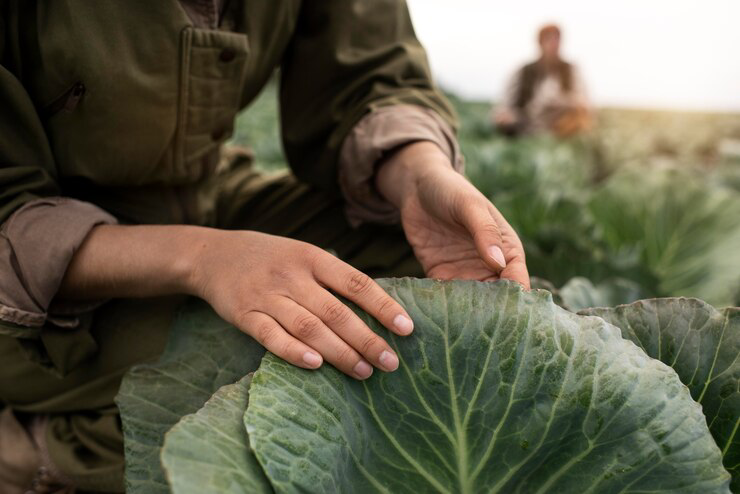
Seven Power Crops That Are Transforming Your Farming Profession.
In this discourse, we shall delve into the captivating realm of crop rotation and elucidate its potential to revolutionize your agricultural pursuits. Envision a meticulously designed rotation system in which every crop is pivotal in augmenting soil vitality, managing insect populations, and optimizing crop production. This is the potential of strategic crop rotation; I will outline seven crops that possess extraordinary qualities and can transform your agricultural practices.
-
Soybeans: A Fixer of Nitrogen.
Despite being frequently undervalued, soybeans exert a significant influence on agricultural ecosystems. Their distinctive capability resides in nitrogen fixation, a process by which they convert atmospheric nitrogen into a form that plants can utilize, thereby enhancing soil fertility. Using natural fertilization in the rotation cycle confers advantages to succeeding crops, stimulating vigorous development while reducing dependence on synthetic fertilizers.
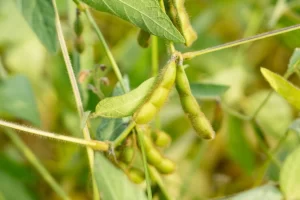
Integrating soybeans into crop rotation strategies provides producers with a twofold benefit: an increase in soil fertility and a decrease in reliance on expensive chemical inputs. Through the rotation of other crops in place of soybeans, producers can regulate soil health efficiently while simultaneously alleviating the ecological and economic challenges inherent in conventional fertilization methods.
Moreover, the aesthetic marvel of lush soybean fields gracefully undulating in the breeze serves as a concrete testament to the inherent capacity of the natural world to support and provide sustenance for life. This further solidifies the importance of soybeans as essential partners in pursuing sustainable agriculture.
-
Winter Wheat: A Protector of the Soil.
Winter wheat, an everyday food item with latent capabilities, arises as an advocate for soil preservation. When sown in the autumn and permitted to thrive throughout the winter, it provides a protective covering for the soil, warding off the damaging effects of wind and precipitation. Furthermore, winter wheat functions as an inherent weed suppressant, enhancing the soil’s structure and character.
In addition to its fundamental function of providing sustenance, winter wheat is crucial in safeguarding agricultural landscapes. It ensures soil integrity and prevents erosion by establishing a defensive barrier over the soil during the severe winter. In addition, its capacity to inhibit vegetation growth enhances the structure and fertility of the soil, thereby establishing an optimal setting for the development of crops.
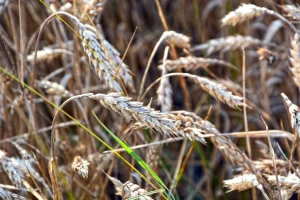
Winter wheat is pivotal in the complex fabric of sustainable agricultural practices, providing nourishment and indispensable soil defense. By being incorporated into crop rotation strategies, it not only guarantees food security but also promotes the development of resilient agricultural systems, underscoring its importance as a soil fortifier and augmenting of overall farm output.
-
Mais (Corn): The Controller of Pests.
Mais, a cereal of immense value recognized worldwide for its capacity to sustain populations, additionally serves a crucial function: pest management. Mais employs strategic rotation to disrupt the life cycles of pests, thereby reducing their detrimental effects and decreasing dependence on chemical pesticides. In addition, post-harvest manure residue promotes soil health by acting as organic matter that is naturally present in the soil, thereby enriching it.
As an integral component of agricultural sustainability, Mais presents itself as a formidable adversary to parasites. Incorporating this element into crop rotation alleviates insect pressures and promotes soil fertility via the breakdown of residue. Therefore, Mais functions as an organic insect management system, encouraging the growth and development of crops while reducing ecological harm and reliance on synthetic substances.
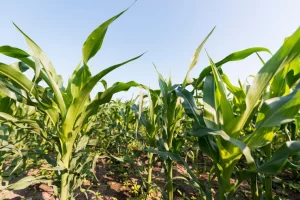
Mais, a fundamental component of insect management strategies, exemplifies the tenacity and efficacy of nature in preserving agricultural vitality. The significance of integrating a variety of crops into crop rotation schemes is emphasized by its function as an insect controller, which promotes the development of sustainable and harmonious agricultural systems that interact with the natural processes at work.
-
Legumes, including beans and peas, serve as nitrogen boosters.
We shall explore the realm of legumes, which includes peas, beans, lentils, and others. Notwithstanding their humble reputation, these crops are unsung champions of sustainable agriculture. The soil is improved through their symbiotic association with nitrogen-fixing microorganisms, which reduces dependence on synthetic fertilizers. Legume promotes renewal and growth by fostering a harmonious ecosystem via rotation.
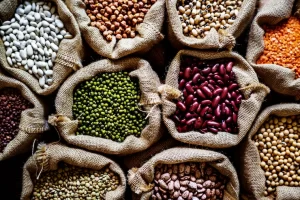
When incorporated into sustainable agricultural practices, legumes excel as nitrogen enhancers. Incorporating atmospheric nitrogen into the soil effectively reduces reliance on chemical fertilizers and consequently alleviates environmental harm. Furthermore, in conjunction with non-legume crops, legume rotation promotes a harmonious ecosystem in which plants mutually reinforce and sustain one another, thereby facilitating robust development.
Incorporating legumes into crop rotation strategies exemplifies the fundamental principles of sustainable agriculture, which aim to optimize yields while reducing ecological impact through natural processes. Farmers foster healthier soils, greater agricultural yields, and a more resilient agricultural environment by acknowledging legumes’ invaluable role as nitrogen enhancers.
-
Canola: A Fighter Against Disease.
Canola serves as an invisible protector against agricultural ailments. Apart from its capacity to yield heart-healthy oil, this multipurpose crop demonstrates exceptional resistance to soil-borne pests and diseases. Canola disrupts pathogen cycles via strategic rotation, reducing reliance on chemical interventions. Additionally, it benefits vegetation and the environment by improving soil structure and water retention through its extensive root system.

Canola assumes a crucial role in disease management strategies by providing producers with an all-natural substitute for chemical interventions. Incorporating it into rotation plans disrupts pathogen cycles, thereby reducing environmental impact and protecting fields from catastrophic diseases. Additionally, the profound roots of canola foster soil vitality, which ultimately contributes to enhanced soil structure and moisture retention, benefiting agricultural development and sustainability.
Regarding agricultural sustainability, canola emerges as a heroic figure in the battle against diseases. In addition to its contributions to hydrocarbon production, it also promotes environmental stewardship and soil health. By integrating canola into rotation schemes, agricultural practitioners strengthen their resistance to diseases and promote sustainable and resilient practices that prioritize the environment’s welfare and crop yield.
-
Barley: The Crop of Resilience.
Rarely disregarded but extraordinarily resilient, Barley demonstrates its value across various agricultural landscapes. The adaptability of Barley, which can flourish in arid plains or cold highlands, renders it a valuable component in rotation schemes. In addition to its applications in soil improvement and weed suppression, Barley provides livestock with nourishing feed, enhancing agricultural operations’ overall versatility.
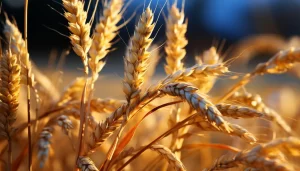
The versatility of Barley greatly enhances agricultural practices. Farmers can cultivate this crop in various environments due to its resilience, which ensures consistent yields and benefits for soil health. Moreover, using Barley in rotation schemes bolsters its worth as a feed source for livestock and as a vegetation suppressant, thereby fostering sustainable and diversified agricultural methodologies.
Due to its adaptability and versatility, Barley arises as a highly advantageous inclusion in rotation strategies. The plant’s capacity to flourish in various environments and its advantageous effects on soil quality and livestock nutrition highlight its importance in fostering agricultural resilience and sustainability. Using Barley in rotation strategies provides farmers with a multipurpose and efficacious instrument to enhance farm productivity and resilience.
-
Sunflowers: An Enhancer of Soil.
Sunflowers, which are symbolic of summer, make a substantial contribution to the improvement of soil quality. After their vivid blossoms resides a vital purpose: soil enhancement. Sunflowers exploit soil strata’s compaction through their extensive root systems, thereby augmenting water infiltration and guaranteeing crops an optimal supply of moisture.

An additional benefit of sunflowers is that they attract beneficial insects, thereby promoting biodiversity in agricultural ecosystems. A diverse array of pollinators and natural predators are attracted to their nectar-rich blossoms, thereby fostering a balanced and harmonious environment. Sunflowers benefit crop health and vitality by fostering this ecosystem, which in turn aids in insect management.
Sunflowers are notable in the agricultural domain for their contributions to soil health and biodiversity. Supportive of symbiotic relationships with beneficial insects and having profound roots, they are indispensable to sustainable agricultural practices. The integration of sunflowers into crop rotation strategies enhances soil structure and moisture retention and promotes the development of a flourishing ecosystem that sustains agricultural operations and the environment.
CONCLUSION:
In conclusion, strategic crop rotation is a fundamental aspect of contemporary agricultural methodologies, providing a viable approach to achieving long-term viability. Diverse crop rotations enable producers to optimize soil health, effectively manage pests, and increase productivity. Every power crop, ranging from disease-fighting canola to nitrogen-fixing legumes, is essential in the transformation towards agricultural sustainability.
Additionally, strategic crop rotation enhances the resilience of agricultural ecosystems by diminishing dependence on chemical inputs and nurturing biodiversity. Farmers establish balanced ecosystems using meticulous planning and execution, wherein every commodity sustains the others in a symbiotic interplay of development and rejuvenation.
Fundamentally, strategic crop rotation exemplifies the tenets of sustainable agriculture by capitalizing on the forces of nature to optimize crop production while reducing adverse ecological effects. With the adoption of these novel methodologies by farmers, a path is opened towards a more robust and prosperous agricultural future, wherein achievement is assessed not solely in terms of crop production but also in terms of ecological vitality and soil health.
FAQ:
-
How exactly do these power crops transform agricultural methods?
– Soybeans, winter wheat, maize, legumes, canola, Barley, and sunflowers are examples of power crops that provide distinctive advantages, including nitrogen fixation, soil protection, insect management, and soil enhancement. Through strategic rotation, they promote sustainable agriculture, reduce dependence on synthetic inputs, and improve soil health.
-
Regarding advantages, how can rotation programmed benefit from including diverse crops?
– Diverse crop rotations enhance soil fertility by restocking nutrients and suppressing pests and diseases. They mitigate soil erosion, enhance soil structure, and foster biodiversity. Additionally, diverse rotations improve farms’ resilience and long-term viability by mitigating the risks associated with monoculture.
-
In what ways can agricultural practitioners optimize the execution of crop rotation techniques on their premises?
To execute crop rotation, farmers must strategize their rotations by crop compatibility, nutrient needs, and insect management objectives. When selecting commodities, they should consider climate, soil type, and market demand, among other variables. Consistent surveillance and adjustment of rotation strategies guarantee their efficacy in enhancing agricultural output and long-term viability.
